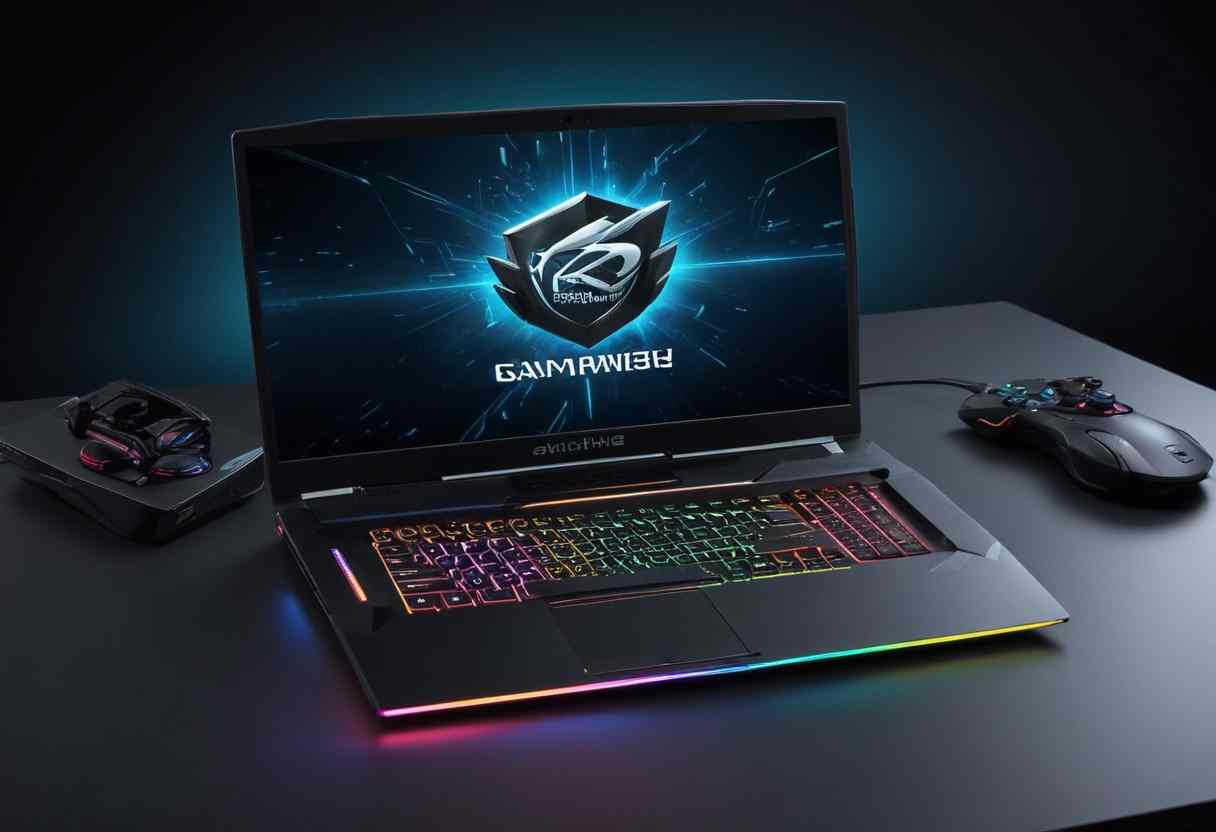The world of gaming has undergone a revolution with the emergence of virtual reality, allowing players to fully immerse themselves in imaginative scenarios. Technological advances now offer a variety of accessible VR options suited to individual needs, preferences, and budgets. Whether an avid gamer or a casual user, a virtual reality headset exists for all. Below, we examine the 10 top VR headsets that elevate the gameplay experience to new heights.
1. Oculus Quest 2: The All-in-One Solution
The groundbreaking Oculus Quest 2 stands out as an all-in-one solution, untethered from additional electronics. Its high-resolution display and capable processor power rich graphics and an extensive library, providing a seamless experience of freedom.
Key Features:
- High-resolution display
- Capable processor
- Extensive game library
- Untethered freedom
2. PlayStation VR: For PlayStation Enthusiasts
The PlayStation VR caters directly to PlayStation fans and is compatible with the PlayStation 4 and 5 ecosystems, spotlighting many exclusive adventures. Its comfortable design incorporates a vibrant 5.7-inch screen spanning 100 degrees.
Key Features:
- Compatibility with PlayStation 4 and 5
- 5.7-inch screen
- 100-degree field of view
- Comfortable design
3. Valve Index: Premium PC VR Experience
The Valve Index strikes an advanced balance for PC users through cutting-edge audiovisual fidelity and functional controllers optimized for precision.
Key Features:
- 1440 x 1600 resolution per eye
- 120Hz refresh rate (144Hz experimental)
- Studio-grade integrated audio
- Intuitive controllers with finger tracking
4. HTC Vive Pro 2: Pinnacle of Visual Fidelity
The HTC Vive Pro 2 establishes a new standard for resolution and immersion, boasting a piercing 5K display (2448 x 2448 per eye) within a 120-degree field of view.
Key Features:
- 5K resolution (2448 x 2448 per eye)
- 120-degree field of view
- Compatibility with SteamVR and Viveport
- Individual lens positioning
5. HP Reverb G2: Peerless Clarity for Simulation and Adventure
Developed alongside Valve and Microsoft, the HP Reverb G2 offers graphics akin to high-definition television through its sharp 2160 x 2160 resolution per eye.
Key Features:
- 2160 x 2160 resolution per eye
- Inside-out tracking with four cameras
- Premium integrated audio
- Ergonomic design
6. Oculus Quest 2: Affordable Entry into VR
The Oculus Quest 2 strikes an ideal balance for those seeking an affordable entry into the world of VR, combining an all-in-one design with high-resolution screens and inside-out tracking.
Key Features:
- All-in-one design
- Inside-out tracking
- High-resolution screens
- There is no need for a powerful PC
7. Pimax Vision 8K X: Cutting-Edge for Serious Gamers
The Pimax Vision 8K X pushes the boundaries of presence with its massive 200-degree field of view and dual 4K displays.
Key Features:
- 200-degree field of view
- Dual 4K displays
- Requires high-end hardware
- Ultimate VR fidelity
8. Samsung Odyssey+: Balanced Middle Ground
The Samsung Odyssey+ offers a comfortable design, balanced specs, and affordable price point as a Windows Mixed Reality headset.
Key Features:
- 1440p AMOLED panels
- Integrated audio
- Plug-and-play experience
- Affordable price point
9. HTC Vive Cosmos Elite: Modular Design for Flexibility
The HTC Vive Cosmos Elite allows for expansive personalization through its modular structure, offering sharp visuals and inside-out tracking.
Key Features:
- 1440 x 1700 resolution per eye
- Modular, upgradable design
- Inside-out tracking
- SteamVR compatibility
10. Lenovo Mirage Solo: Standalone Virtual Voyaging
The Lenovo Mirage Solo is a standalone headset with WorldSense technology, providing six degrees of freedom through motion sensing.
Key Features:
- 1280 x 1440 resolution per eye
- WorldSense 6DoF tracking
- Integrated design
- Lightweight comfort
Future Trends in Virtual Reality Gaming
1. Enhanced Realism and Immersion
As developers continue to push the boundaries of VR, we can anticipate headsets with even higher resolutions, wider fields of view, and faster refresh rates. These advancements will create more lifelike and immersive experiences, blurring the line between virtual and reality.
2. Haptic Feedback and Sensory Integration
Future VR systems will likely incorporate advanced haptic feedback, allowing players to feel textures and resistance, adding a new layer of immersion. Additionally, sensory integration, such as smell and taste, might become part of the VR experience, making virtual worlds more tangible and engaging.
3. Wireless and Portable Solutions
The trend towards wireless and portable VR headsets will continue, reducing the need for cumbersome cables and allowing for greater freedom of movement. Improvements in battery life and lightweight designs will make these headsets more convenient and comfortable for extended use.
4. Social and Multiplayer VR
Social interaction within VR will become more sophisticated, enabling users to connect, communicate, and collaborate in virtual spaces. Multiplayer VR games and shared virtual environments will become more prevalent, fostering a sense of community and shared experience.
5. Integration with AI and Machine Learning
Artificial intelligence and machine learning will play a significant role in the evolution of VR. AI can enhance NPC (non-playable character) interactions, create more dynamic and responsive environments, and personalize the gaming experience based on individual preferences and behavior.
6. Expanded Use Beyond Gaming
While gaming remains a major focus, VR applications will expand into other areas such as education, training, healthcare, and remote work. These sectors will leverage VR technology to provide immersive learning experiences, simulate real-world scenarios, and facilitate virtual collaboration.
7. Affordable and Accessible VR
As the technology matures, the cost of VR headsets and systems will likely decrease, making them more accessible to a broader audience. This democratization of VR will encourage more people to explore and adopt virtual reality, driving further innovation and content creation.
8. Hybrid Reality Experiences
Hybrid reality experiences, which combine elements of augmented reality (AR) and virtual reality (VR), will offer new and exciting ways to interact with digital content. This convergence will create seamless transitions between real and virtual worlds, enhancing the overall user experience.
Recommendations for Choosing the Right VR Headset
Selecting the right VR headset can be a daunting task, given the plethora of options available. Here are some recommendations to help you choose a headset that best suits your needs:
1. Define Your Purpose
First, consider what you intend to use the VR headset for. Are you primarily interested in gaming, or are you looking for a device that can also be used for work, education, or social interactions? Different headsets excel in different areas, so defining your purpose will help narrow down your options.
2. Budget Considerations
VR headsets range from affordable entry-level models to high-end premium devices. Determine your budget and find a headset that offers the best features within your price range. Keep in mind that higher-end headsets often require a powerful PC, which could add to the overall cost.
3. Compatibility
Ensure the VR headset you choose is compatible with your existing hardware. For instance, if you own a PlayStation console, the PlayStation VR is a natural choice. If you have a gaming PC, options like the Valve Index or HTC Vive Pro 2 would be suitable. Standalone headsets like the Oculus Quest 2 are excellent if you prefer a device that doesn’t need a PC or console.
4. Comfort and Ergonomics
Comfort is crucial, especially for extended VR sessions. Look for headsets with adjustable straps, lightweight designs, and comfortable padding. Consider the fit and whether the headset can accommodate glasses if you wear them.
5. Display Quality
The quality of the display significantly impacts the VR experience. Higher resolution, refresh rates, and wider fields of view contribute to more immersive visuals. Compare these specifications among different headsets to find one that offers the best visual experience within your budget.
6. Tracking and Controllers
Accurate tracking and intuitive controllers enhance the immersive experience. Inside-out tracking is convenient as it doesn’t require external sensors. Evaluate the controllers for their ergonomics and responsiveness, as they are essential for interacting with the virtual environment.
7. Content Library
A robust content library ensures you have plenty of games and experiences to explore. Research the available content for each headset and see if it aligns with your interests. Platforms like SteamVR, Oculus Store, and PlayStation Store offer a wide variety of VR titles.
8. Future-Proofing
Consider the longevity of your investment. Some headsets offer modular upgrades or have strong developer support, ensuring they remain relevant as technology evolves. Check if the manufacturer provides regular software updates and support.
9. User Reviews and Expert Opinions
Reading user reviews and expert opinions can provide valuable insights into the performance and reliability of a VR headset. Look for feedback on aspects like build quality, ease of setup, and overall user experience.
10. Try Before You Buy
If possible, try out different VR headsets before making a purchase. Many electronics stores and VR arcades offer demos that allow you to experience the headsets firsthand. This can help you make a more informed decision.
Conclusion
Choosing the right VR headset requires careful consideration of your needs, budget, and preferences. By defining your purpose, assessing compatibility, and comparing key features, you can find a headset that provides an exceptional virtual reality experience. As VR technology continues to advance, the opportunities for immersive entertainment, education, and social interaction will only expand. Embrace the world of VR and discover the endless possibilities that await you in virtual reality.



